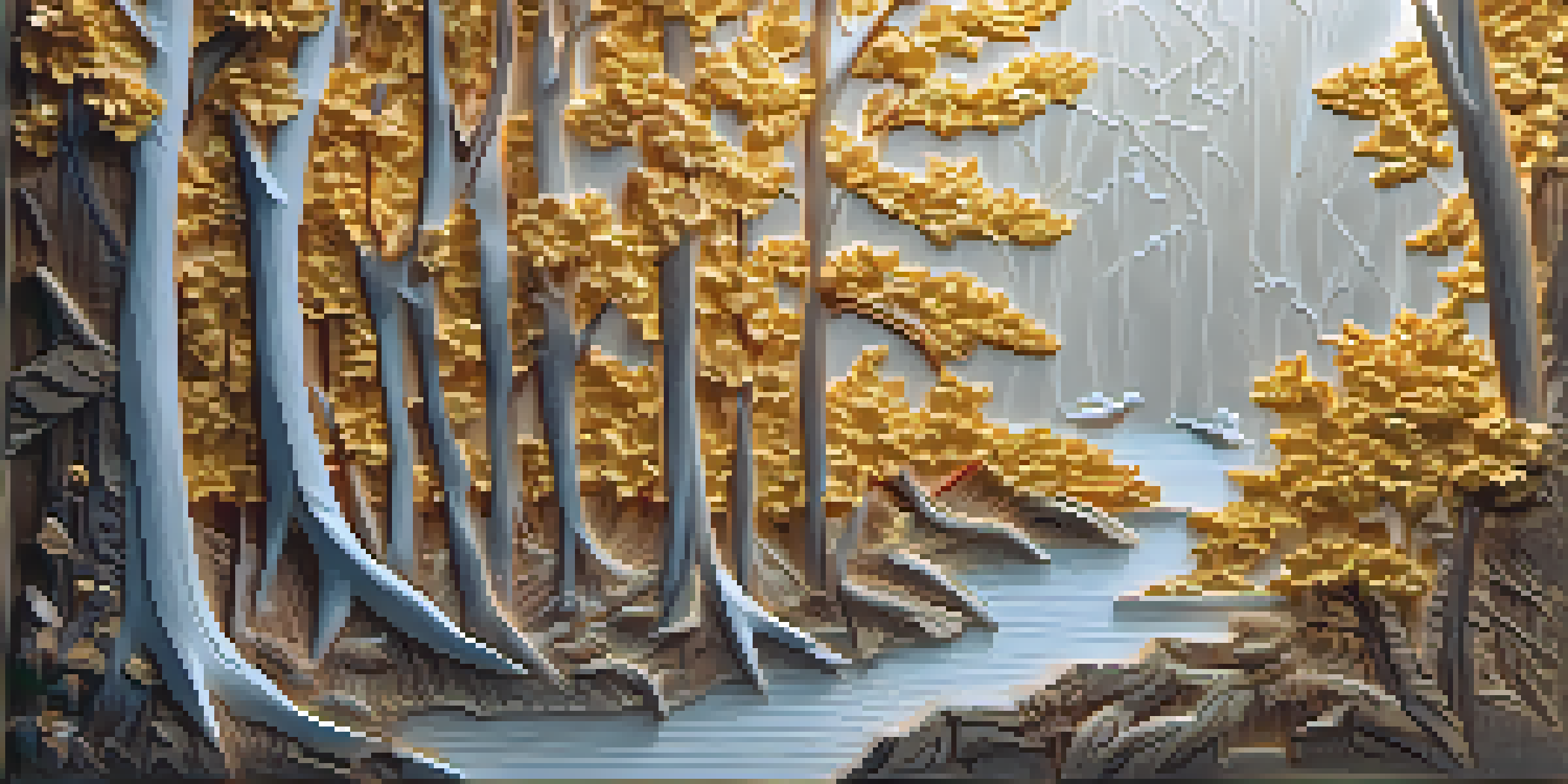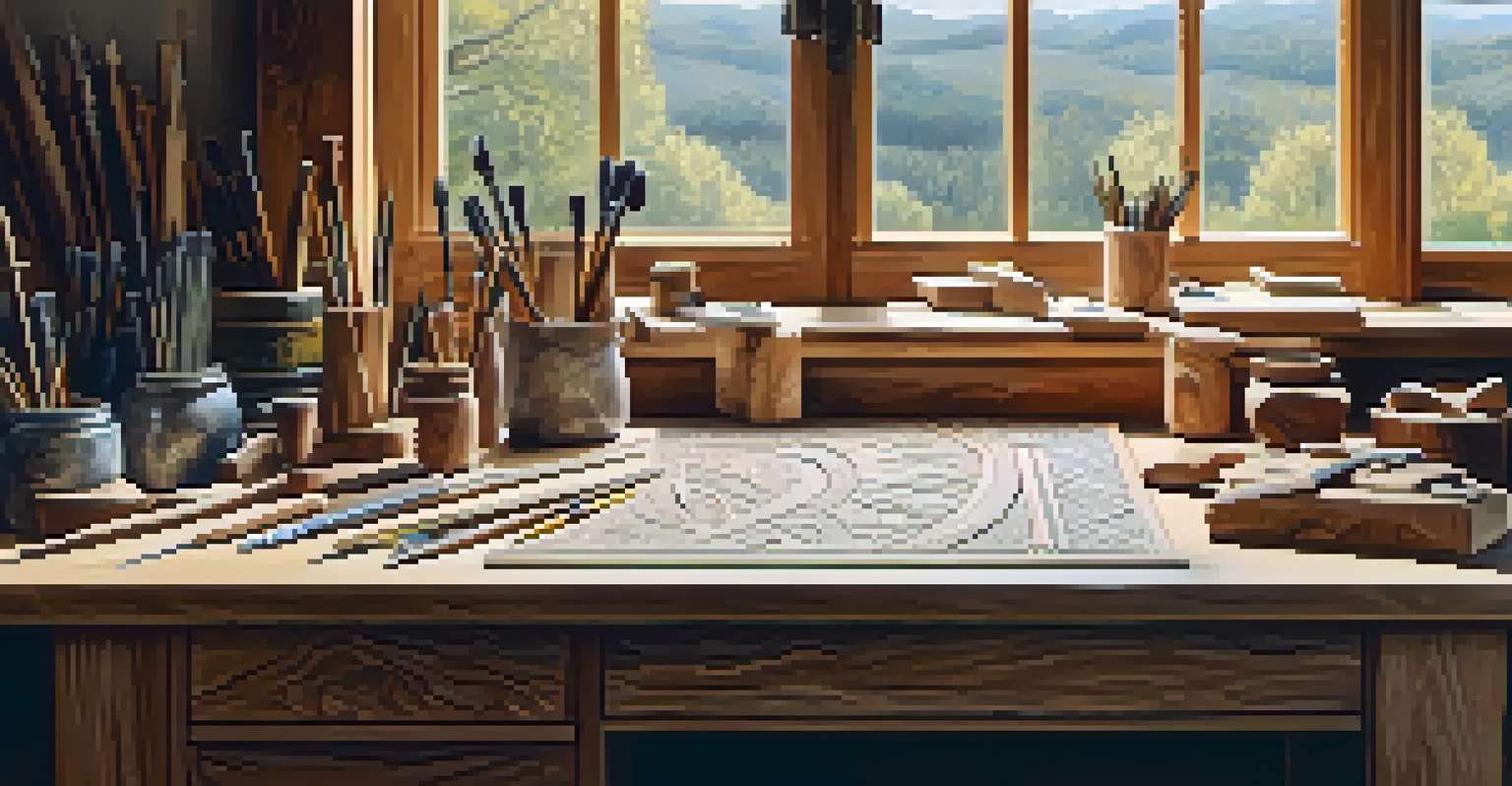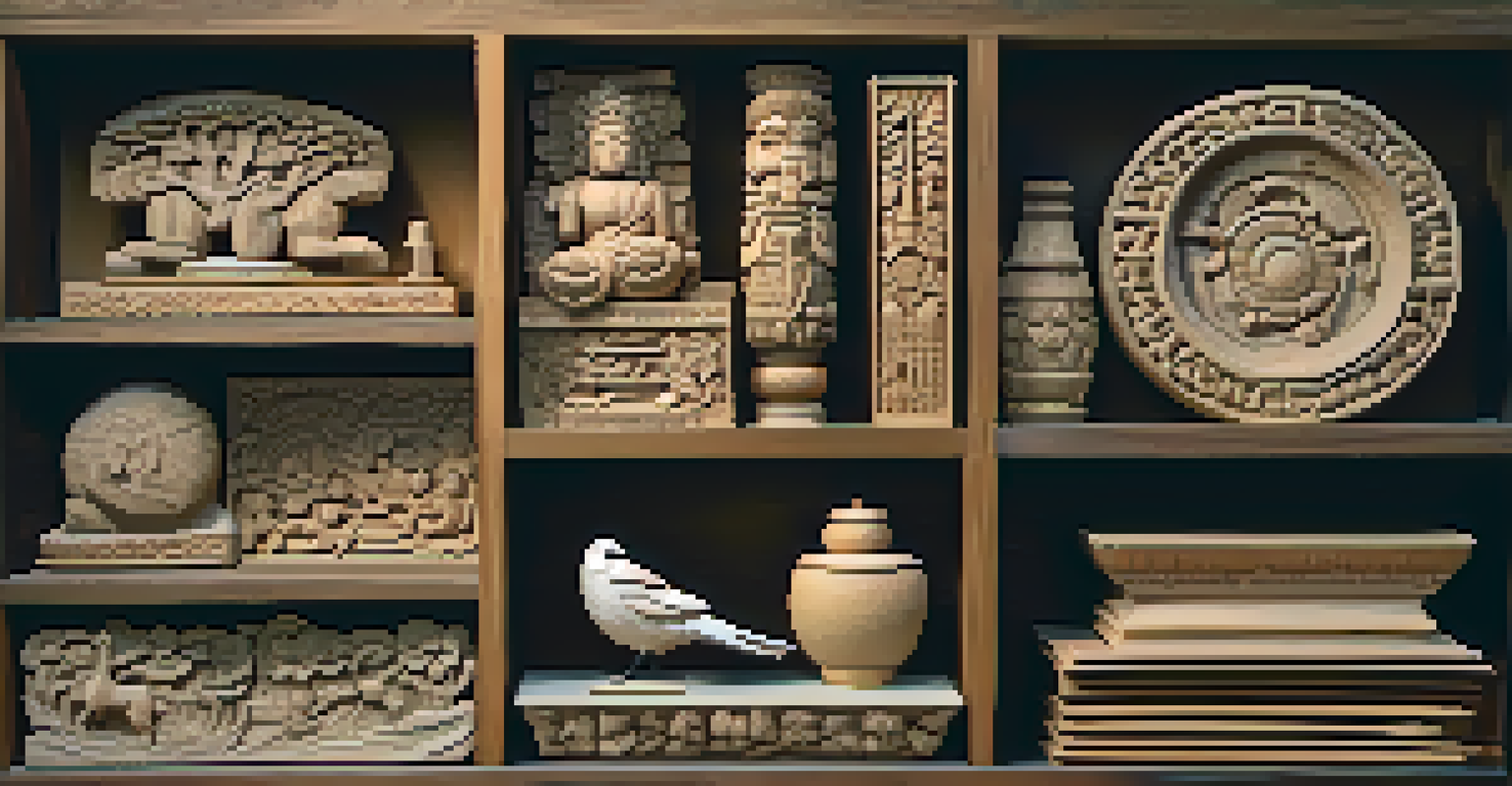Basic Relief Carving: A Beginner's Guide to Stunning Art

What is Basic Relief Carving? A Simple Introduction
Relief carving is a technique where the sculpture is raised above a flat background. Think of it like creating a 3D image on a 2D surface. It's often used in wood, stone, and even metal, making it a versatile art form. For beginners, relief carving offers a manageable way to start sculpting without overwhelming complexity.
Art is not freedom from discipline, but disciplined freedom.
At its core, relief carving allows artists to create depth and dimension while still adhering to a flat surface. This method can produce stunning designs ranging from intricate patterns to detailed scenes. Whether you're inspired by nature or abstract art, there’s a style for everyone to explore.
As you embark on your relief carving journey, remember that practice is key. Starting with basic shapes and gradually moving to more complex designs will help you build your skills. Soon, you'll find joy in transforming simple materials into captivating pieces of art.
Essential Tools for Your Relief Carving Journey
Having the right tools is crucial for successful relief carving. Basic tools include carving knives, chisels, and gouges, each serving a specific purpose. For instance, a straight chisel is excellent for making clean cuts, while a V-tool helps create fine details and textures.

In addition to carving tools, you’ll need a sturdy work surface and safety gear like gloves and goggles. A comfortable workspace can greatly enhance your experience, allowing you to focus on your art. Investing in good quality tools will pay off in the long run, improving both your craftsmanship and enjoyment.
Relief Carving Basics Explained
Relief carving creates raised sculptures on a flat surface, making it an accessible starting point for aspiring artists.
As a beginner, don't feel pressured to buy every tool available. Start with a few essentials and gradually expand your toolkit as you grow more confident. Over time, you'll discover which tools you prefer and how they can help you bring your creative visions to life.
Choosing the Right Material for Relief Carving
Selecting the right material is a vital step in your relief carving adventure. Common choices include wood, stone, and linoleum, each offering unique textures and challenges. For beginners, softwoods like pine are great because they’re easier to carve and more forgiving of mistakes.
Every artist was first an amateur.
Consider starting with a practice piece to get a feel for your chosen material. This way, you can experiment without the pressure of creating a perfect final product. As you gain confidence, you might want to try harder woods or different materials that provide distinct effects.
Remember that each material behaves differently, so be patient as you learn its characteristics. Embrace the learning process; every chip and mark is a step toward mastery. Enjoy the journey of discovering how each material can help express your artistic vision.
Basic Techniques Every Beginner Should Know
As you dive into relief carving, mastering a few fundamental techniques will set the stage for your success. Start with basic cuts, such as straight lines and curves, to develop your hand-eye coordination. These skills will be the building blocks for more intricate designs.
Another essential technique is understanding depth. Creating varying levels of depth in your carving can add dimension and interest to your work. Practice layering your cuts to achieve different effects, making your art come alive with a sense of movement and realism.
Essential Tools for Beginners
Investing in basic carving tools like knives and chisels is crucial for success, allowing you to gradually build your skills.
Don’t forget about safety while carving! Always carve away from your body and keep your fingers clear of the blade. By practicing these basic techniques and prioritizing safety, you’ll lay a strong foundation for your relief carving journey.
Finding Inspiration for Your Relief Carving Projects
Inspiration can come from anywhere, and as an artist, it's essential to keep your creative juices flowing. Nature, architecture, and even everyday objects can spark ideas for your relief carvings. Take a walk outside, visit a museum, or browse online galleries to gather inspiration.
You can also explore the works of established relief carvers for ideas. Study their techniques and styles, and consider how you might incorporate elements into your own work. Remember, inspiration doesn’t mean copying; it’s about finding your unique voice in the art.
Keeping a sketchbook can be a helpful way to capture your ideas. Jot down sketches or notes whenever inspiration strikes. This practice will not only help you organize your thoughts but also encourage you to experiment with different concepts in your relief carving.
Common Mistakes to Avoid When Starting Out
Every beginner makes mistakes, and that’s perfectly okay! One common mistake is rushing through the process. Carving takes time and patience; hurrying can lead to errors. Allow yourself to take breaks and step back to assess your work.
Another pitfall is neglecting to plan your design. Before you start carving, sketch out your idea and visualize the final result. This preparation will help you stay focused and reduce the likelihood of making irreversible mistakes.
Finding Inspiration Everywhere
Inspiration for relief carving can come from nature, architecture, and everyday life, encouraging creativity and personal expression.
Lastly, don’t be discouraged by imperfections. Every artist has pieces that don’t turn out as planned. Embrace each mistake as a learning opportunity and remember that improvement comes with practice and persistence.
Showcasing Your Relief Carving Creations
Once you’ve completed a piece, it’s time to show it off! Displaying your work not only boosts your confidence but also allows you to share your passion with others. Consider different ways to showcase your art, like framing it or creating a dedicated display area in your home.
You can also participate in local art fairs or exhibitions to share your creations with a broader audience. This is a fantastic way to connect with other artists and art enthusiasts, gaining valuable feedback and encouragement. Plus, it’s a great opportunity to network and learn from others.

Don’t underestimate the power of social media in promoting your relief carvings. Platforms like Instagram and Pinterest are perfect for visually showcasing your work and connecting with a global audience. Sharing your journey online can inspire others and create a supportive community of fellow artists.